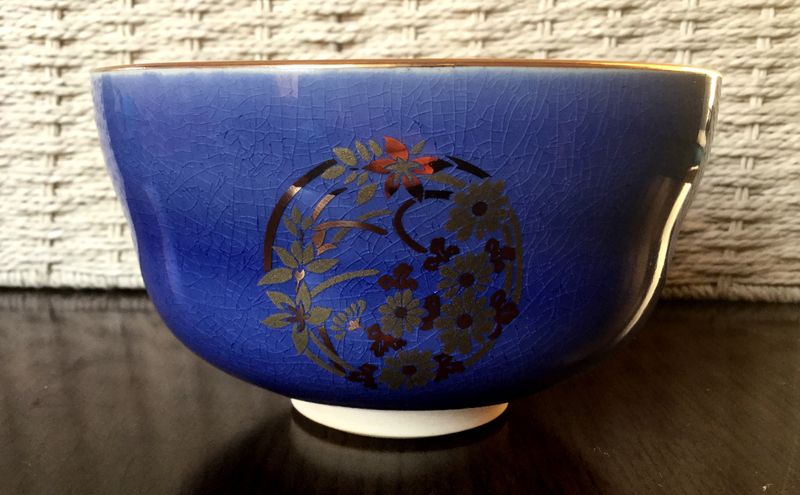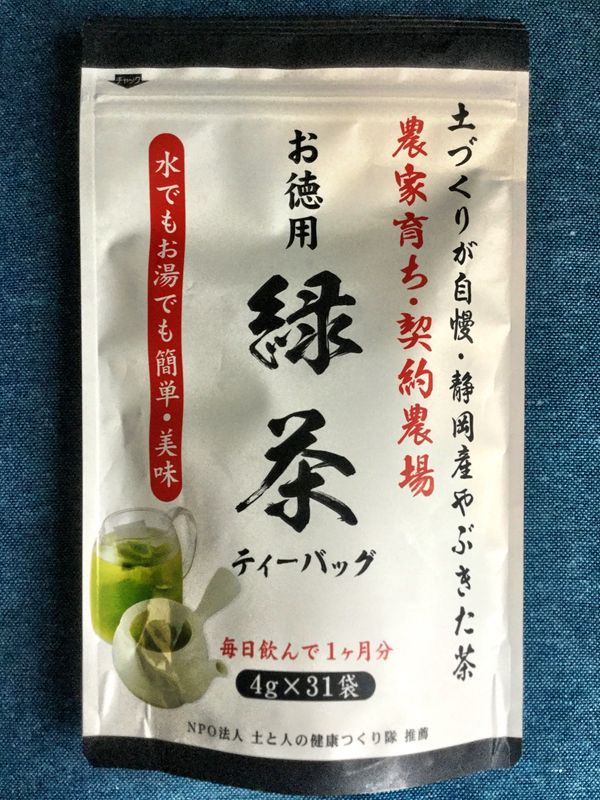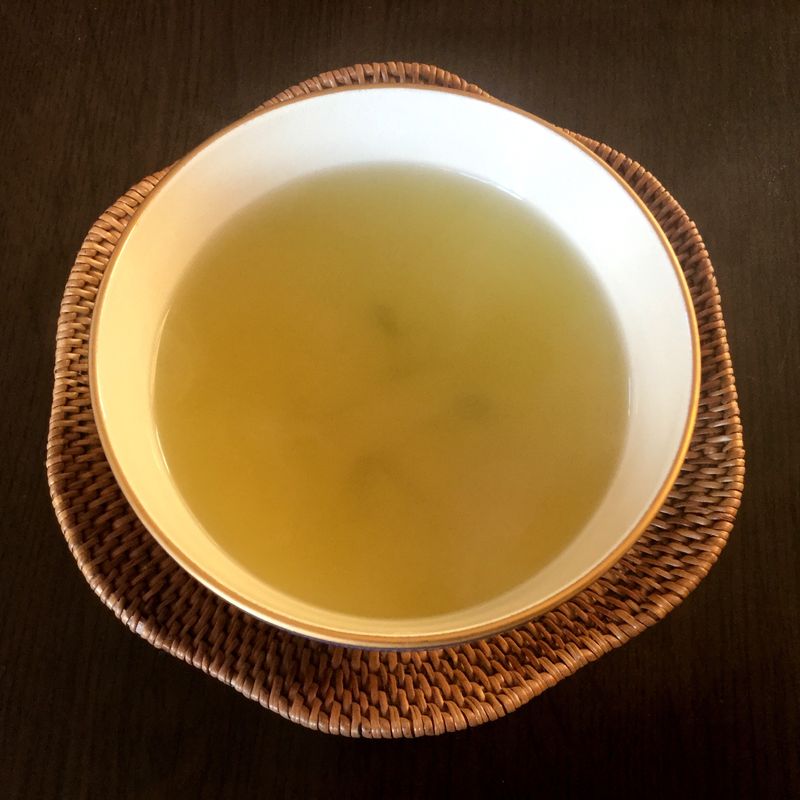Dec 12, 2019
Shizuoka Ryokucha, an everyday ritual

A tea ceremony bowl I use every day
You don’t have to go to Shizuoka Prefecture to enjoy the soothing and warming qualities of green tea. You can get quality tea from the prefecture at supermarkets and neighborhood shops all over Japan. And you don’t need perfect tea ceremony technique to enjoy the ritual of tea. Brewing and sipping green tea is a daily custom in Japan. It’s served to welcome guests in business and at home, and provides a relaxing way to take a break with company, or quietly by yourself.

お徳用緑茶 Otokuyou Ryokucha
As the packaging states, this tea is grown in Shizuoka Prefecture with great pride, but with no fertilizer and pesticides. The tea growers achieve this by enriching the good soil of Shizuoka tea gardens with enzymes which help native microorganisms break down organic matter, and suppress bad bacteria which might harm the tea trees. The result is, no toxins are used to ward off disease, and no fertilizer runoff to damage the water sources of Shizuoka Prefecture. This environmentally-friendly way of growing tea results in a delicious product.
This particular choice of tea is marketed as お徳用緑茶 otokuyo ryokucha, or good value tea in bags, enough for daily consumption for a month. Delicious ryokucha, a common form of green tea, doesn’t have to cost a fortune. This bag came in under 200 yen at a local supermarket.
Ryokucha is one of the many varieties of tea produced and consumed in Japan. This tea is processed immediately after harvest. In this state, the tea retains a lot of tannins, which gives the tea an astringent quality. Depending on the growing conditions and processing, different types of ryokucha result. One common form of ryokucha, sencha, is composed of the leaves of tea trees that have been grown in full sunlight. Another form, gyokuro, is harvested from the same kind of tea tree as sencha, but the trees are grown in shady conditions. Gyokuro has less of the bitter-tasting tannin and has enhanced flavor. Quality matcha, used in tea ceremony and in the preparation of various foods, is also grown in shady conditions, then steamed, dried, and powdered.
This particular tea is packaged in bags, which is convenient for daily consumption. I prefer to brew tea from tea leaves in my own tea pots, savoring the relaxing ritual of tea brewing. However, this time, I chose the tea bag version of ryokucha in order to share it with friends from abroad who may be unfamiliar with Japanese green tea. Maybe they will get hooked on tea, and next time they visit, I’ll get them curious about the slower version, loose tea.

This post is supported by Shizuoka Green Tea Guide, one of City-Cost's Supporters helping City-Cost bloggers to enjoy life in Japan and engage in new experiences.



0 Comments